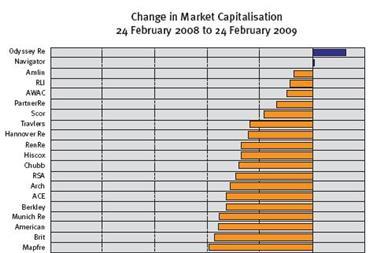Captives should be treated differently under Solvency II, says ECIROA
Solvency II has recently been approved by the European Parliament in Strasbourg and must be transposed by member states by October 31, 2012 at the latest.
According to rapporteur Peter Skinner: ‘The aim of the approved legislation is to help ensure the financial stability of insurance (and reinsurance) companies by introducing more sophisticated solvency requirements which will take better account of the risks the companies must deal with: insurance risks as at present, but also market, credit and operational risks.’
The large number of captive insurance companies operating in Europe will be subject to this legislation and it is vital that its application to captives is appropriate, taking into consideration their size and relatively straightforward structure.
This is where the principle of proportionality is important. The framework directive proposal establishes the proportionality principle as a general principle that applies throughout the directive but leaves its concrete implementation to Level 2 measures and Level 3 guidance.
Captive owners have joined together to form a new association, ECIROA (European Captive Insurance and Reinsurance Association) which aims to find simplifications suitable for the nature of captives under Pillars 1, 2 and 3, whilst supporting the targets of Solvency II. ECIROA has made comments on the consultation papers issued by the Committee of European Insurance and Occupational Pensions Supervisors (CEIOPS), with suggestions on how the legislation can be applied to captives.
These captive owners are not looking for a standardised approach as this could be counter-productive considering the variation in size and structure of captives and of the risks they underwrite. ECIROA’s aim is to achieve an appropriate simplification for captives that will assist regulators in interpreting and applying the legislation to these specialist companies.
The association’s work so far has highlighted a number of issues. One important area is the definition of captives included in the directive. The decision as to whether the proportionality principle should apply will be made by the regulators in each jurisdiction but it is important that they are able to use a definition which is comprehensive and which will embrace all of the captives in their jurisdiction.
“It is vital that [Solvency II's] application to captives is appropriate, taking into consideration their size and relatively straightforward structure
This is difficult currently as the position is complicated by the Reinsurance Directive (2005/68/EC) which also applies to reinsurance captives. This directive changes the position where companies own multiple captives, one of which is writing direct business. In this scenario, the owner is an insurance group and the captives would no longer be treated as captives.
ECIROA is also working with insurers and captive management companies on areas of common interest. Fronting to captives is one of these areas. Solvency II will create a requirement for Insurers to underpin more capital when reinsuring to a captive insurance company (as the majority of captives do not have a financial rating).
However, fronted captive programmes do not increase insurers’ underwriting or credit risk as the large international insurers have the knowledge and expertise to diligently check the capital strength and the reliability of the captives with which they are contracting.
The next few months will be very important as a paper on simplifications is expected to be released in July, with comments to be made by October.
ECIROA currently has 32 major multi-national companies from France, Germany, Holland, Luxembourg, Denmark, Italy, Israel, Switzerland, Sweden and UK as members. They welcome new members (www.eciroa.org).
This article was written by Valerie Alexander, UK Head of Corporate Insurance for Deutsche Bank, and a member of ECIROA.
.

















No comments yet